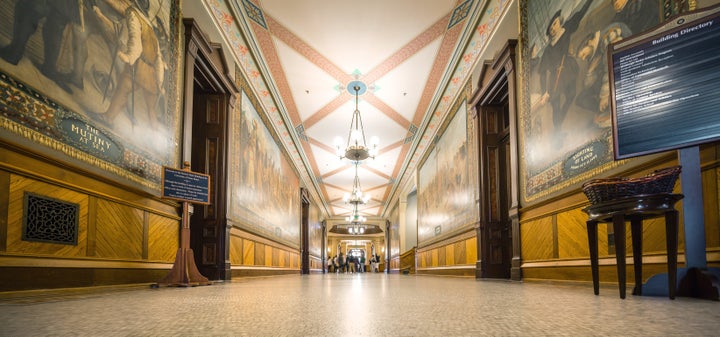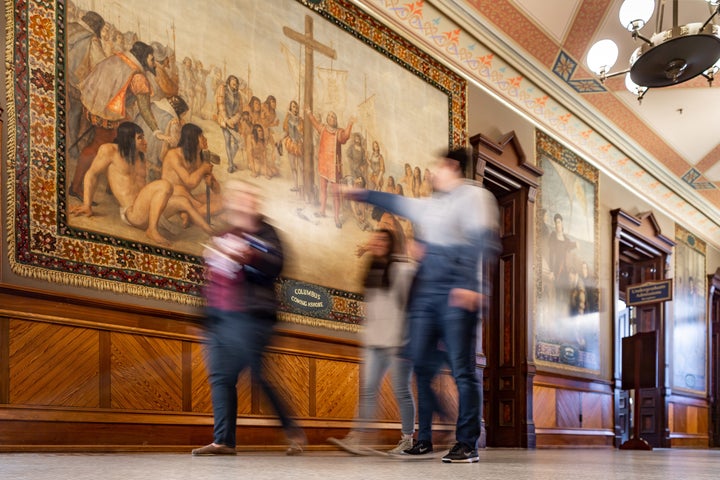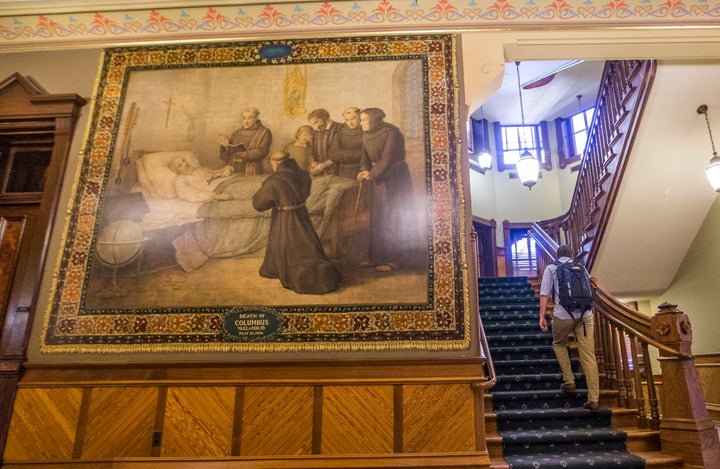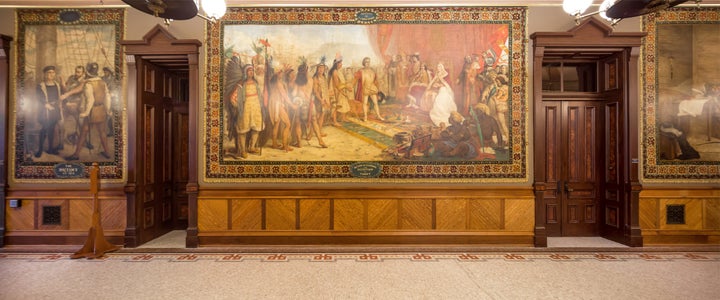The University of Notre Dame will cover up a series of murals depicting Christopher Columbus amid backlash over the paintings’ stereotypical and inaccurate portrayal of Native Americans and their relationship with white European explorers, the school announced.
The 12 murals, painted by Luigi Gregori in the 1880s, adorn the entrance of the university’s Main Building, a busy throughway that houses administration offices and some classrooms, in South Bend, Indiana.
At the time of their creation, the paintings were intended to empower Catholic immigrants in America, but their message whitewashes the catastrophic impact European explorers had on native peoples, Notre Dame President John Jenkins wrote in a letter to members of the school’s community on Saturday.
“They reflect the attitudes of the time and were intended as a didactic presentation, responding to cultural challenges for the school’s largely immigrant, Catholic population,” Jenkins wrote. “In recent years, however, many have come to see the murals as at best blind to the consequences of Columbus’s voyage for the indigenous peoples who inhabited this ‘new’ world and at worst demeaning toward them.”


In an effort to preserve the murals, which Gregori painted directly onto the building’s plaster walls, woven covers will be mounted over them, which allow the paintings to be viewed on occasion, Jenkins said. The school intends to create a permanent display featuring high-resolution images of the murals alongside proper historical context in a different location on campus.
“Gregori’s murals focused on the popular image of Columbus as an American hero, who was also an immigrant and a devout Catholic,” Jenkins wrote. “The message to the Notre Dame community was that they too, though largely immigrants and Catholics, could be fully and proudly American.”
“For the native peoples of this ‘new’ land, however, Columbus’s arrival was nothing short of a catastrophe,” he continued. “Whatever else Columbus’s arrival brought, for these peoples it led to exploitation, expropriation of land, repression of vibrant cultures, enslavement, and new diseases causing epidemics that killed millions ... The murals’ depiction of Columbus as beneficent explorer and friend of the native peoples hides from view the darker side of this story, a side we must acknowledge.”


Notre Dame’s pledge to conceal the murals follows mounting backlash from students and faculty. In 2017, hundreds of people signed a letter penned by a Notre Dame Ph.D. candidate calling on Jenkins to remove the paintings.
“Columbus’ fortune, fame, and wealth came from the destruction, mutilation, and transaction of Native American and African persons,” John Slattery wrote in the letter. “In this era of political divisiveness and a renewed rise of dangerous nationalism, it is time for Notre Dame to remove its own version of a Confederate Monument.”
The Native American Student Association of Notre Dame applauded Jenkins’ “thoughtful and wise decision” in a Facebook post Saturday.
“This is a good step towards acknowledging the full humanity of those Native people who have come before us,” the group wrote. “We sincerely hope that Father Jenkins and his administration will continue to prioritize Native issues on our campus in the coming weeks and months as there is still work to be done.”
